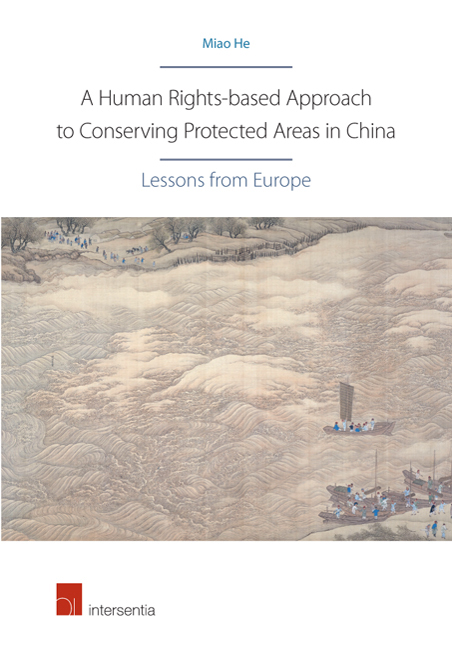Book contents
- Frontmatter
- Contents
- List of Abbreviations
- PART I INTRODUCTION AND BACKGROUND
- PART II ANALYSIS OF THE RELATIONSHIP BETWEEN HUMAN RIGHTS AND PROTECTED AREAS CONSERVATION IN CHINA AND IN EUROPE
- Chapter 3 Protected Areas Conservation in China and in Europe
- Chapter 4 Substantive Right (Right to Property) and Protected Areas Conservation
- Chapter 5 Procedural Rights and Protected Areas Conservation
- Chapter 6 Conclusions for Part II
- PART III IMPLEMENTATION AND GENERAL CONCLUSION
- References
Chapter 3 - Protected Areas Conservation in China and in Europe
from PART II - ANALYSIS OF THE RELATIONSHIP BETWEEN HUMAN RIGHTS AND PROTECTED AREAS CONSERVATION IN CHINA AND IN EUROPE
Published online by Cambridge University Press: 22 September 2018
- Frontmatter
- Contents
- List of Abbreviations
- PART I INTRODUCTION AND BACKGROUND
- PART II ANALYSIS OF THE RELATIONSHIP BETWEEN HUMAN RIGHTS AND PROTECTED AREAS CONSERVATION IN CHINA AND IN EUROPE
- Chapter 3 Protected Areas Conservation in China and in Europe
- Chapter 4 Substantive Right (Right to Property) and Protected Areas Conservation
- Chapter 5 Procedural Rights and Protected Areas Conservation
- Chapter 6 Conclusions for Part II
- PART III IMPLEMENTATION AND GENERAL CONCLUSION
- References
Summary
Protected areas are widely recognised as a cornerstone of biodiversity management and sustainable development. A large number of global and regional treaties and other instruments promote the establishment of protected areas. Among these, the CBD, with 193 countries as members, is a particularly important endorsement of protected areas. It states that, as far as possible and appropriate, parties shall “establish a system of protected areas or areas where special measures need to be taken to conserve biological diversity”. Other agreements and actions in the international arena also support protected areas.
Under this global framework on protected areas, this idea was actively supported by some NGOs, for instance IUCN's WCPA (World Commission on Protected Areas). The WCPA is the major global network of protected areas specialists; its mission is “to promote the establishment and effective management of a representative world-wide network of terrestrial and marine protected areas”. Besides this, the fifth IUCN World Parks Congress, which is regarded as a landmark global forum on protected areas, held in Durban in 2003 under the title “Benefits Beyond Boundaries”, aimed to consolidate the role of protected areas in conserving biodiversity, as well as encouraging debate on their role in human development, in the fight against poverty and in moderating the effects of global change. This led to the more formalised process of the CBD's Programme of Work on Protected Areas, adopted in 2004, and still relevant to policy today. It triggered the launch of regional and national protected areas initiatives, and facilitated the documentation of social, economic, cultural, ecological and legal benefits of protected areas. As a result, protected areas have become a major instrument to reduce the rate of worldwide biodiversity loss. This calls for the effectiveness in protected areas management.
The CBD's Programme of Work on Protected Areas aimed to help countries meet specific targets on biodiversity. The CBD 2010 Biodiversity Target, which was agreed in April 2002, was the first set of targets. This target was subsequently endorsed by the World Summit on Sustainable Development and the United Nations General Assembly, and was incorporated as a new target under the Millennium Development Goals; however, this target was not met, leading to a reformulation of the Biodiversity Target.
- Type
- Chapter
- Information
- A Human Rights-based Approach to Conserving Protected Areas in ChinaLessons from Europe, pp. 91 - 116Publisher: IntersentiaPrint publication year: 2016



